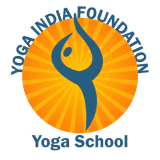
Surya namaskar (sun salutation) | The first Asana: Pranamasana (Prayer Pose)
The Sun Salutation consist of the following asanas:
- Pranamasana (Prayer Pose).
- Hasta Utthanasana (Raised Hand Pose).
- Pada Hastasana (Hand to Leg Pose).
- Ashwa Sanchalanasana (Horse Riding Pose).
- Parvatasana (Mountain Pose).
- Ashtanga Namaskar (8 body parts pose).
- Bhujangasana (Cobra Pose).
- Parvatasana (Mountain Pose).
- Ashwa Sanchalanasana (Horse Riding Pose).
- Pada Hastasana (Hand to Leg Pose).
- Hasta Utthanasana (Raised Hand Pose).
- Pranamasana (Prayer Pose).
- Pranamasana (Prayer Pose).
- Hasta Utthanasana (Raised Hand Pose).
- Pada Hastasana (Hand to Leg Pose).
- Ashwa Sanchalanasana (Horse Riding Pose).
- Parvatasana (Mountain Pose).
- Ashtanga Namaskar (8 body parts pose).
- Bhujangasana (Cobra Pose).
- Parvatasana (Mountain Pose).
- Ashwa Sanchalanasana (Horse Riding Pose).
- Pada Hastasana (Hand to Leg Pose).
- Hasta Utthanasana (Raised Hand Pose).
- Pranamasana (Prayer Pose)
Now, as a yoga practitioner, you must have practiced this sequence (or as a variation) multiple times already.
In the Western world, teachers focus a lot on the physical movements and less on the scientific explanation behind them. So, let us explain you the wisdom behind Surya Namaskar and why it may not be as good for you as a woman as you thought.
- Surya Namaskar activates your whole body and muscles, leaving you more energized, feeling some tingling and prana (energy) move through your body. That’s great, but listen up!
- Surya Namaskar increases the body temperature which is harmful during menstruation and pregnancy time. And why is that? During menstruation time, the female body temperature naturally drops down so when you then increase the temperature through this practice of Sun Salutations, it will cause a stronger bleeding and more cramping. During pregnancy, the body temperature naturally increases and decreases daily. A rise in body temperature should be avoided completely as it messes up the progesterone levels in the body.
- Surya Namaskar increases the blood pressure in the body. Use a blood pressure monitor to check for yourself before and after a few rounds! The increase in blood pressure causes more pressure on the cardio system so especially when you have hypertension already, this should be avoided.
- Another contra-indication that is not commonly known is the change in the female and male hormones during surya namaskar. Surya Namaskar increases the androgens in your body which are also known as the male hormones. When the male hormones rise in the female body, it leads to various complications such as increased levels of stress, irritability, moodiness, discomfort and restlessness. It can cause excessive bleedings during menstruation, irregular menstruations, amenorreah and painful periods. According to various studies of the University of Yogic Sciences Haridwar, Surya Namaskar and increased levels of androgens are also linked to infertility, PCOS and endometriosis. So women in general should avoid this, especially when trying to conceive, during menstruation and already existing cycle irregularities.
- The final caution that we find relevant is the abdominal pressure during two asanas in the surya namaskar: Ashtanga Namaskar and Bhujangasana. Abdominal pressure is a major risk for pregnant women so this sequence of asana should be avoided completely during any stage of pregnancy.
If you understand these contra-indications, it becomes obvious that the Sun Salutation is not suitable for the female body. But can we never practice it again?
The answer is: you can! But only from a therapeutic view point.
Let’s say, you tend to have low blood pressure and feel always cold. In this case, you can practice Surya Namaskar occasionally because it will help to both boost blood pressure and body heat. But don’t practice so much all the time!
Keep the cautions in mind and use the Surya Namaskar wisely. It’s powerful, but only when practiced with mindfulness!
If you are looking to learn more in-depth about the benefits and contra-indications of Surya Namaskar and all the other yoga postures and techniques, feel free to send us an email or check out one of our upcoming yoga teacher training in Rishikesh, India and online courses.
Support us on our mission to spread traditional yogic wisdom and ancient science to the world and clarify the misconceptions of modern yoga practices that were wrongly translated from the Indian sciptures. Learn more.
